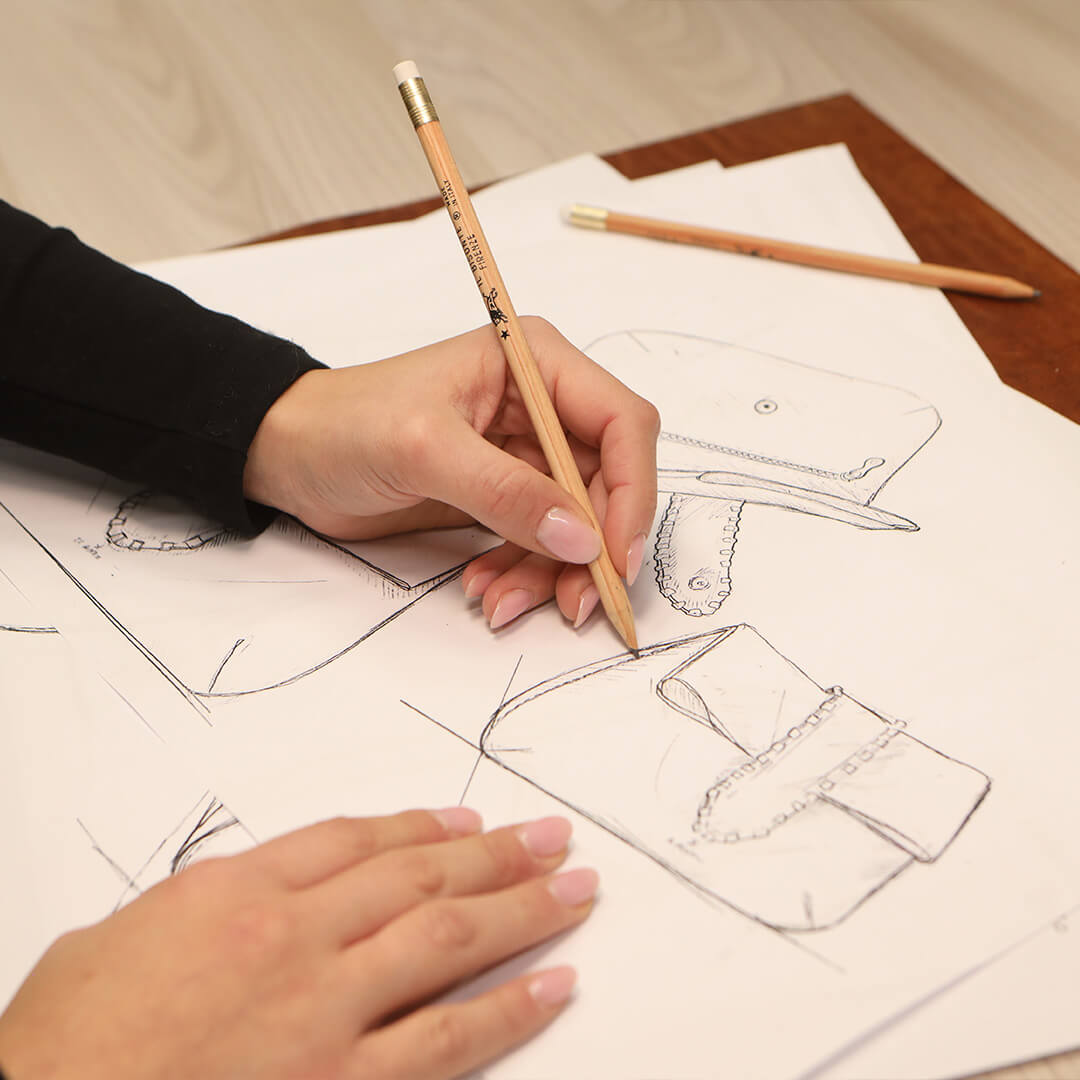We’re in Pontassieve! For our second installment we toured Il Bisonte’s creative and logistics center. In the Leather department we got to see all the colors and techniques used on this precious cowhide. And also some of the leather details, which we’ll dedicate more attention to one day.
In Pontassieve, Il Bisonte’s creative and logistics center opened its doors to the Journal. Following our visit to the Prototype and Patternmaking department, we were invited to the Leather department. The relative pages in our notebook are annotated with both technical and very poetic words. First bloom. Volonatura.
LEATHER IN ALL ITS GLORY…
Inside the large room on the ground floor where the leather hides are handled, you get the sense that you’re in the middle of a long process. And what happens prior, in the tannery, is no mystery. In fact, it’s the pride of Il Bisonte! Which has always chosen naturally tanned leathers using tannin extracted from the Argentine quebracho tree.
In practice: in the Leather department, shelves reach the ceiling to accommodate hundreds of rolls of products featuring a rainbow of colors and various treatments. Before the right pieces are cut and delivered to the craftsmen at their stations, there’s time for us to spread out and admire a few rolls, amidst the comings and goings of the workers. «Cowhide sings», we are told: and we hear the melody of a large sheet of paper being crumpled. «It’s transparent»: and we see the palm of the hand tracing the back of the sheet.
…AND SOME SIGNS OF ITS NATURAL LIFE
There is one detail to add. Or rather, there are many. Details that are sometimes concealed. These are, they explain, certain marks on the animal hides. Scars, black dots, etc. They sort the leather into first- and second-rate quality. What the Journal asks is: how can we educate customers of fine craftsmanship to accept, and even appreciate, bags bearing these tiny marks?
They are the discrete traces of the owner’s previous life, which is natural. Leather does not descend from a perfect heaven. It has mingled with earth. And it will mingle with other things, leading to a new use as a bag, for us. It’s a market matter, but it’s also a bit of an ecological one. The first step in this complex discussion, perhaps, is to praise those details we saw in Pontassieve.



